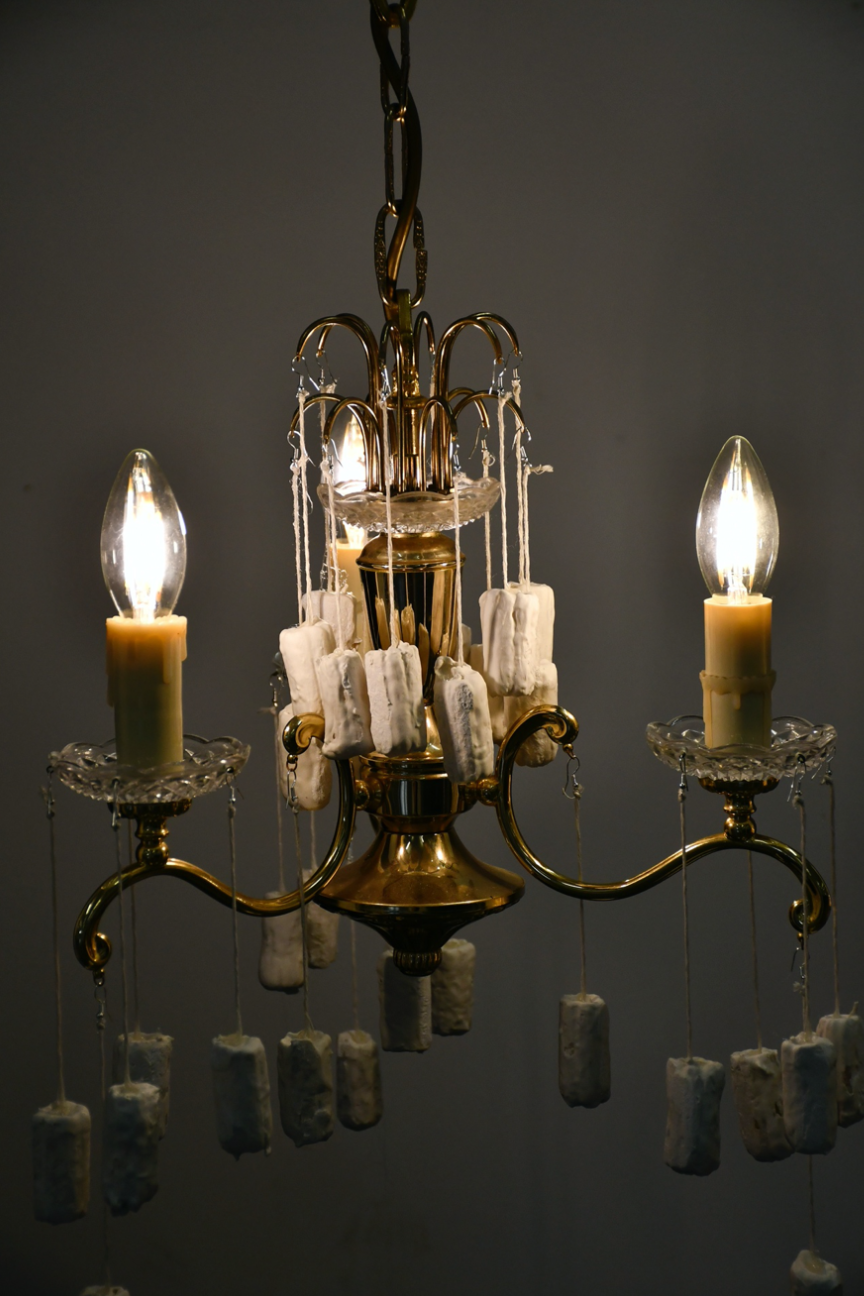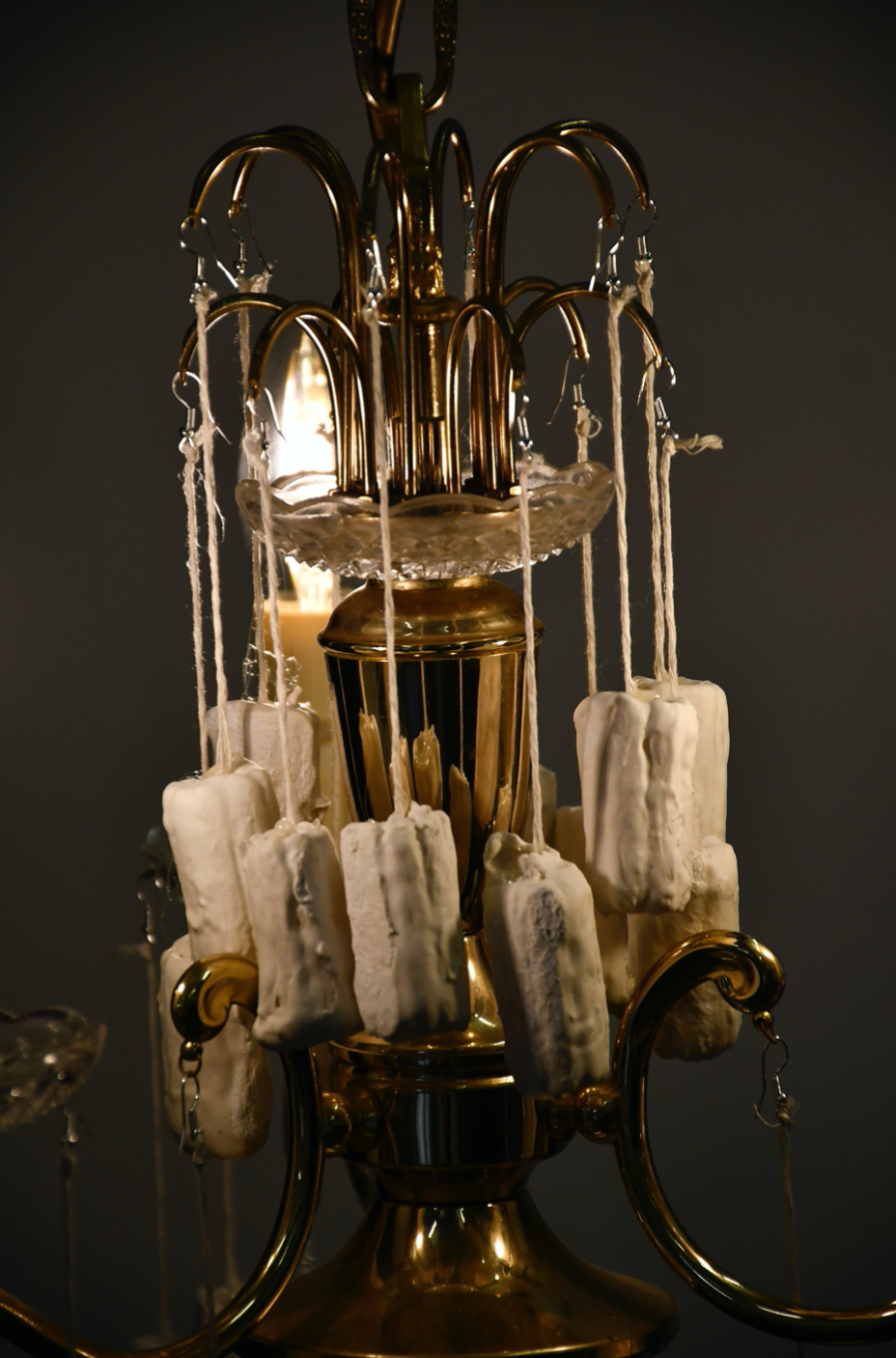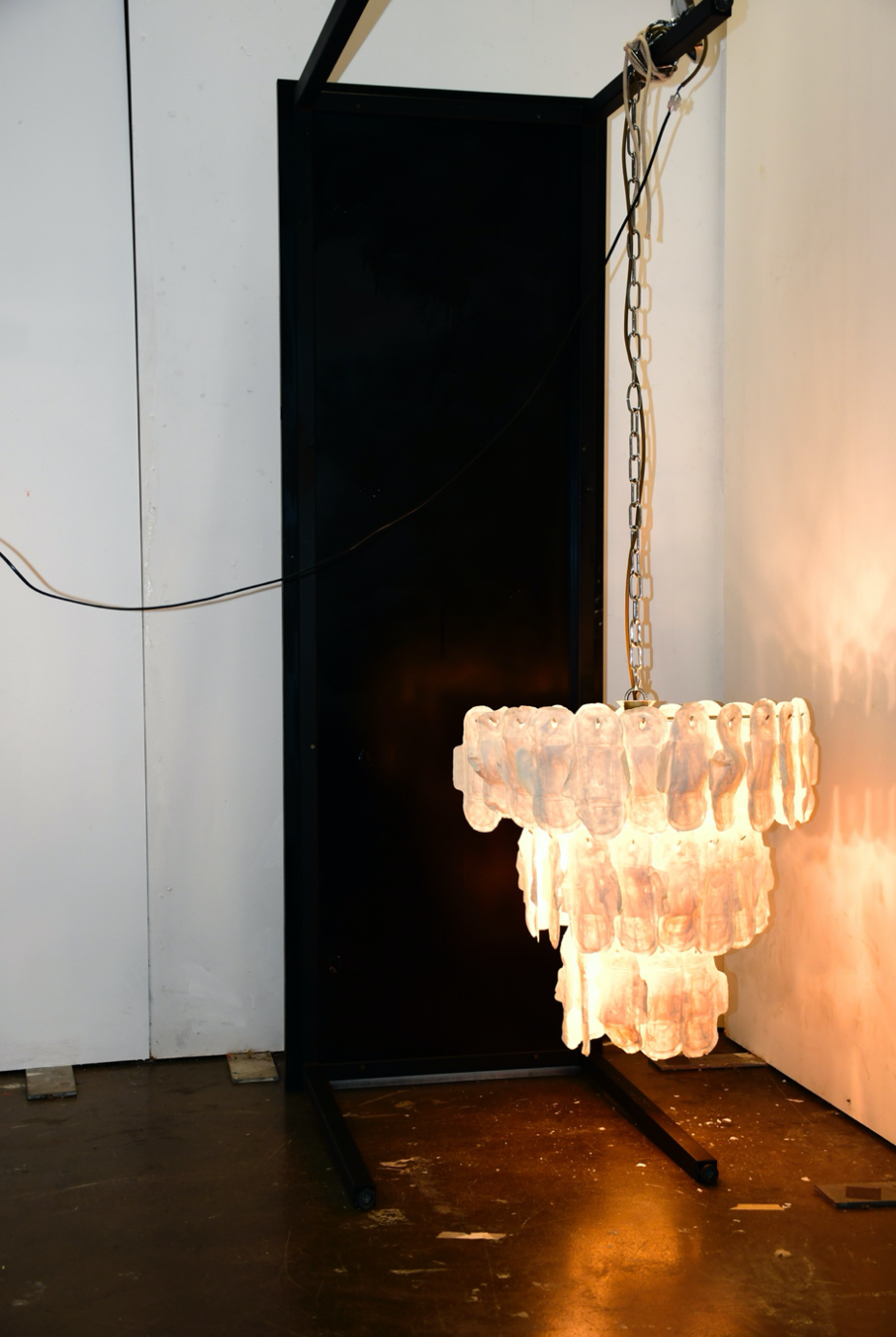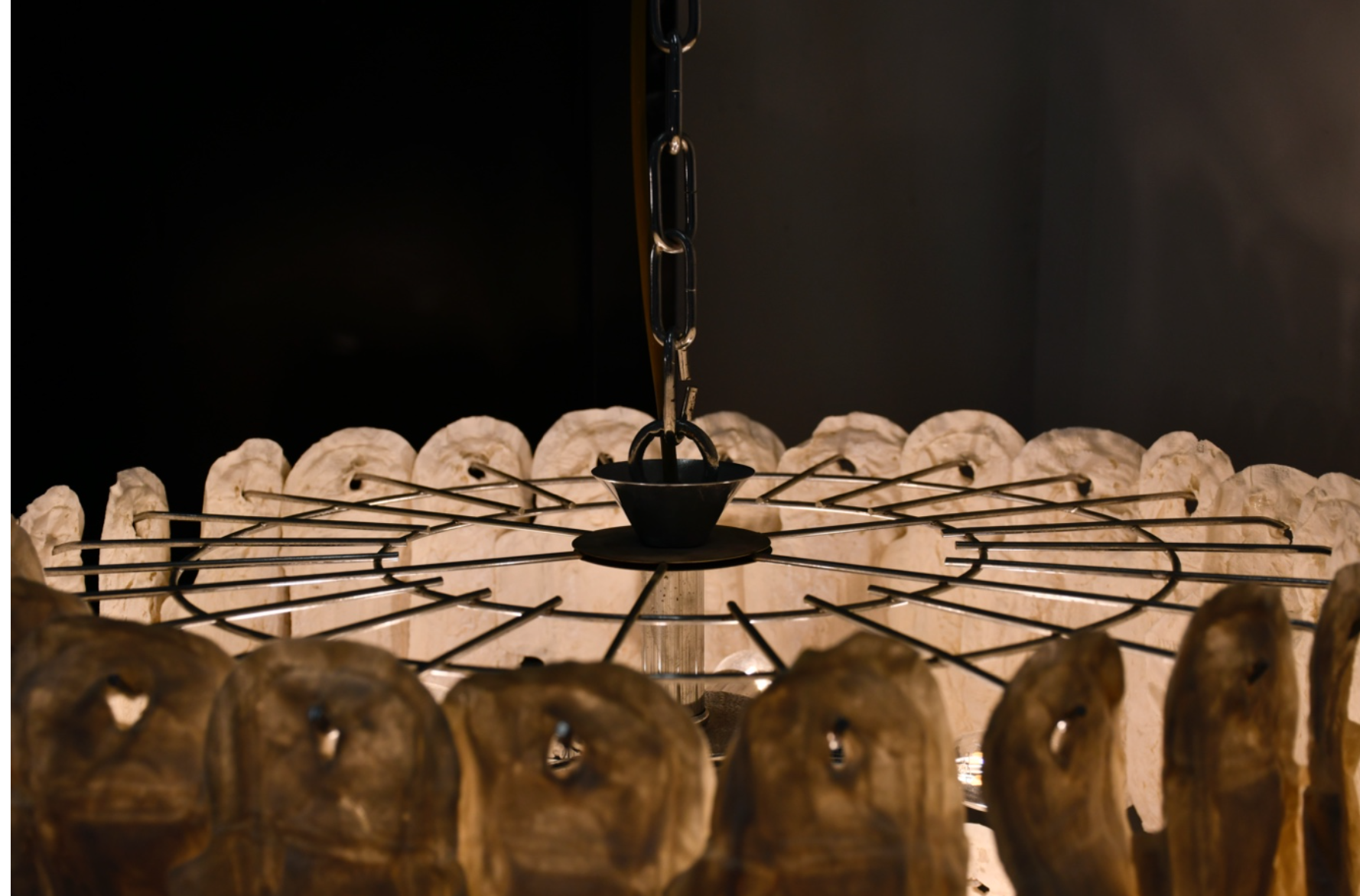
Crystal Chandelier
I (Pads)
ABOUT THE SERIES
Throughout time, the high cost of hygienic products for bodies with uteruses has been ignored, dismissed and undermined. Further, their visibility due to their taboo and stigmatised status has been suppressed. Iconoclastic, the Crystal Chandelier series soils the abundant economic history of the chandelier through abjection. Throughout time, chandelier’s have been associated with wealth, usually holding ornaments of high value, both financially and aesthetically, such as crystal. Thus, through holding the ceramic translation of sanitary instruments, tampons and pads, the value of these objects are underlined. This concept continues on from my Sculpture Trophy (2023), a tapestry comprising of embroided and beaded pads. Ai Wei Wei’s Fountain of Light, explores the chandelier in a similar way, questioning ‘Value’ in relation to forgotten objects and concepts, specifically Tatlin’s Tower (1919- 20) and Communism.
The displacement and reinvention of objects is further contained by how the chandeliers are displayed, hung on black painted tables turned on their side. Tables have a forgotten status in their own; the ignored bedroom counterpart, a dining room piece only to be cloaked in cloth. They are always placed, 4 feet on the floor. Here, they are placed on their side, comforting the unconventional, surreal and absurd objects they hold. Akin to Duchamp’s Bottle Rack (1914), the work displays ordinary, mundane objects disassociated with art and the aesthetic.
The series together from left to right: II - Tampon, I - Pad
CRYSTAL CHANDELIER I - PAD

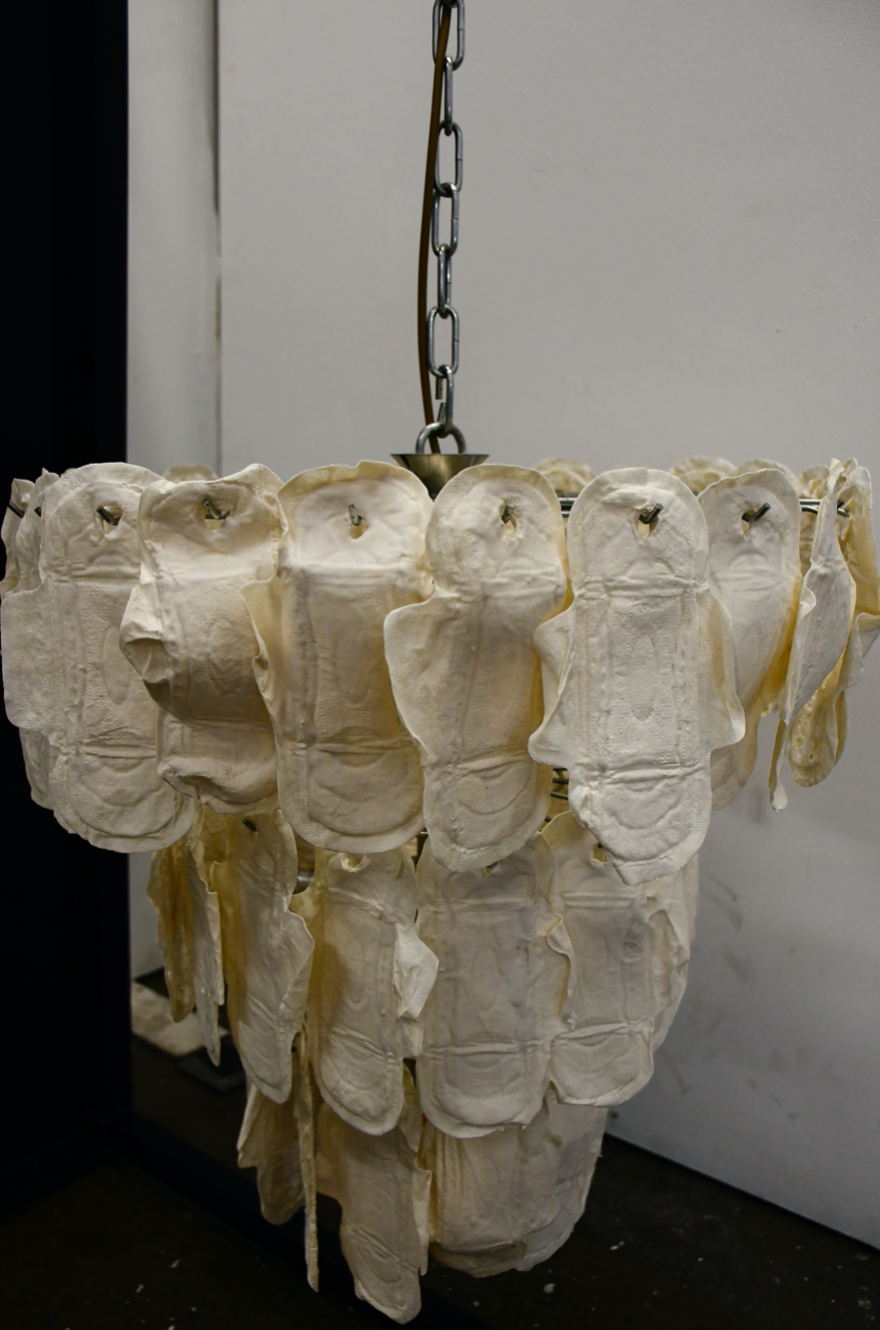


CRYSTAL CHANDELIER II - TAMPON
